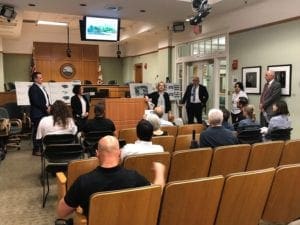
Project Update: Herman Massey Park – Tampa, FL
Our team led the second of two public meetings to present the new design developments for the park.
Learn from award-winning professionals — explore our whitepapers, blogs, and the latest industry updates.
Join our dynamic organization of engineers, land surveyors, landscape architects, environmental scientists, and architects!
Talk to a market leader today! We’ll answer any questions you have about our professional services.

The playgrounds of yesteryear finally reached the end of their lifecycle. Faded plastic, rusted metal components, sterile synthetic flooring, leached toxins, and cookie-cutter designs remind us that their aesthetic requires more than an overhaul. They need to be replaced with affordable green spaces that are easy to maintain, easy on the environment, and inviting for kids.
The prefabricated playgrounds dotting the landscape at parks and schools across the country served their purpose. Well-intentioned concerns over children and injury avoidance triggered a movement from organic settings with grass and trees — and more than a few rough edges — to safer spaces made largely with petroleum-based products. Along the way, kids got attached to their computer screens and handheld devices. Though it took a while, the verdict is finally in — our kids need to get back outside and start climbing over rocks again. They need to hear the wind in the leaves, slide down a hill, and put their feet in the water. Their imagination, and their health, depends on it.
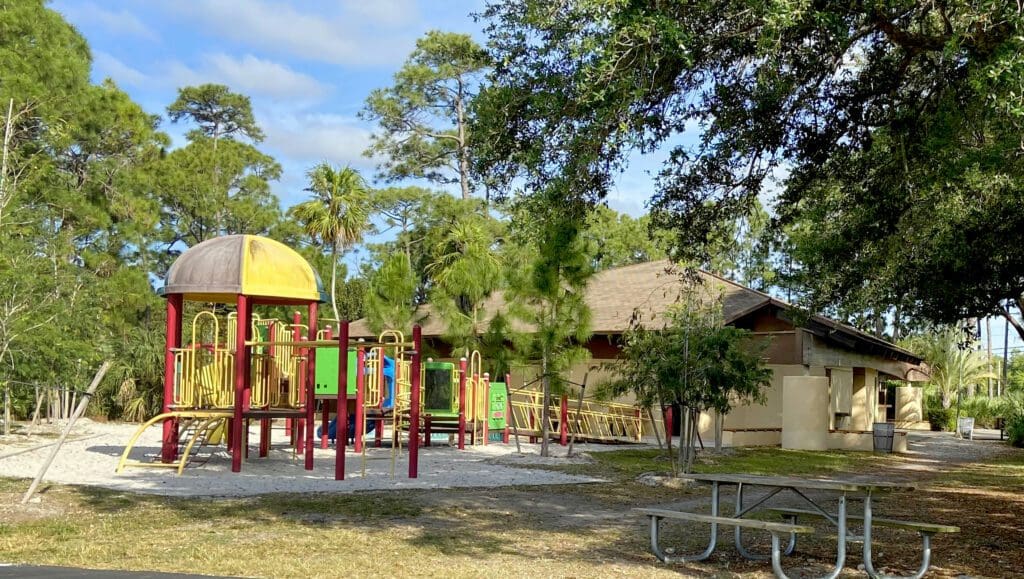
Fortunately, the solution is simple — convert industrial playgrounds into nature-based playgrounds. Pull out the plastic and steel and replace it with logs and native vegetation. Scrap the hardscapes and heat islands and create appealingly green micro-climates where kids — and their parents — can feel happy and safe in the great outdoors.
While nature-based playgrounds are already gaining traction across Florida, research suggests that the interest crosses the country. The National Wildlife Federation is in full support of these new playgrounds, as is the Natural Learning Initiative, based at North Carolina State University and sponsored by U.S. Department of Agriculture, U.S. Fish and Wildlife Service, and the National Institute of Environmental Health Services, among others. Underscoring these organizations’ involvement is a Nature Conservancy survey finding that 50% of adults think it’s a serious problem that kids aren’t spending enough time outdoors.
While this movement predates COVID-19, the pandemic’s side-effect of pushing families outdoors to escape the tedium of home confinement introduced an entire generation to the pleasures and benefits of nature. But it’s about more than log stairwells and interactive gardens. A green space can be the perfect venue for art and music, both often sparking discovery in young minds.
Since nature-based playgrounds are still relatively new, issues of liability and accessibility are important. However, ASTM International, formerly known as the American Society for Testing and Materials, provides guidance on environmental safety, and nature-based playgrounds can be designed using materials that comply with the Consumer Product Safety Commission. An important component of this emerging design initiative is accessibility, embracing children of all physical and mental abilities. Even with berms, rocks, trees, and water, a nature-based playground can be engineered for enjoyment by everyone through Universal Accessible Design.

For instance, a youngster with autism can still enjoy the park’s features along with his or her friends. With the use of switchbacks, a child with a mobility impairment can still climb the hill. This ADA compliance, if properly done, looks invisible to the user and represents a big step in the right direction. In the past, it was about just getting to the park. Now, it’s about participation, activity, and the mental and physical health that come with being out and about under the sun.
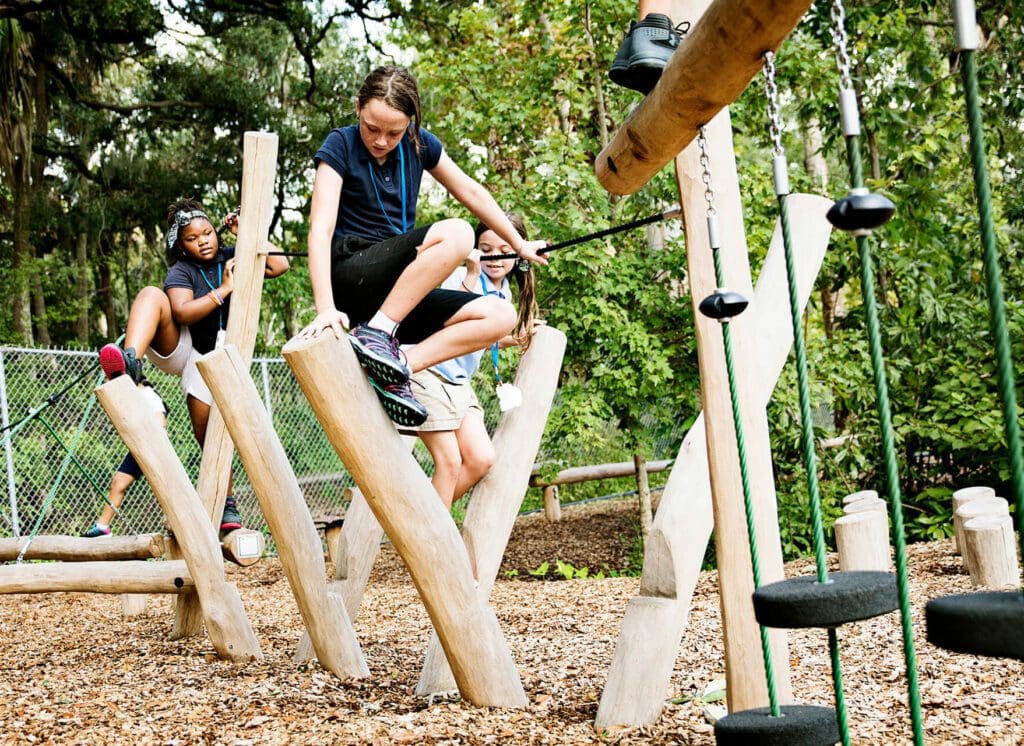
From a planning perspective, the first step is meeting with the client, determining goals, and who is expected to be their users. Clients must also know what’s possible and be aware of the many choices they’ll have. A nature-based playground can vary in size from a few hundred square feet to a few acres, incorporating features that are rustic or highly programmed. Far from being a static process, a nature-based playground speaks to potential and can go in many directions.

It’s the designer’s job to explain the long-term benefits of a nature-based playground, which are its sustainability and maintainability. Drought-resistant plantings require water to become established, but once accomplished, maintenance and the expense associated with it, is minimal. And the longer a nature-based playground is in place, the more it looks like it belongs there. The contours soften with use. The space’s appeal is enhanced as the vegetation matures. While all of this might look easy once it’s done, a properly installed playground requires a multi-discipline effort including landscape architecture, civil and structural engineering, and environmental science.
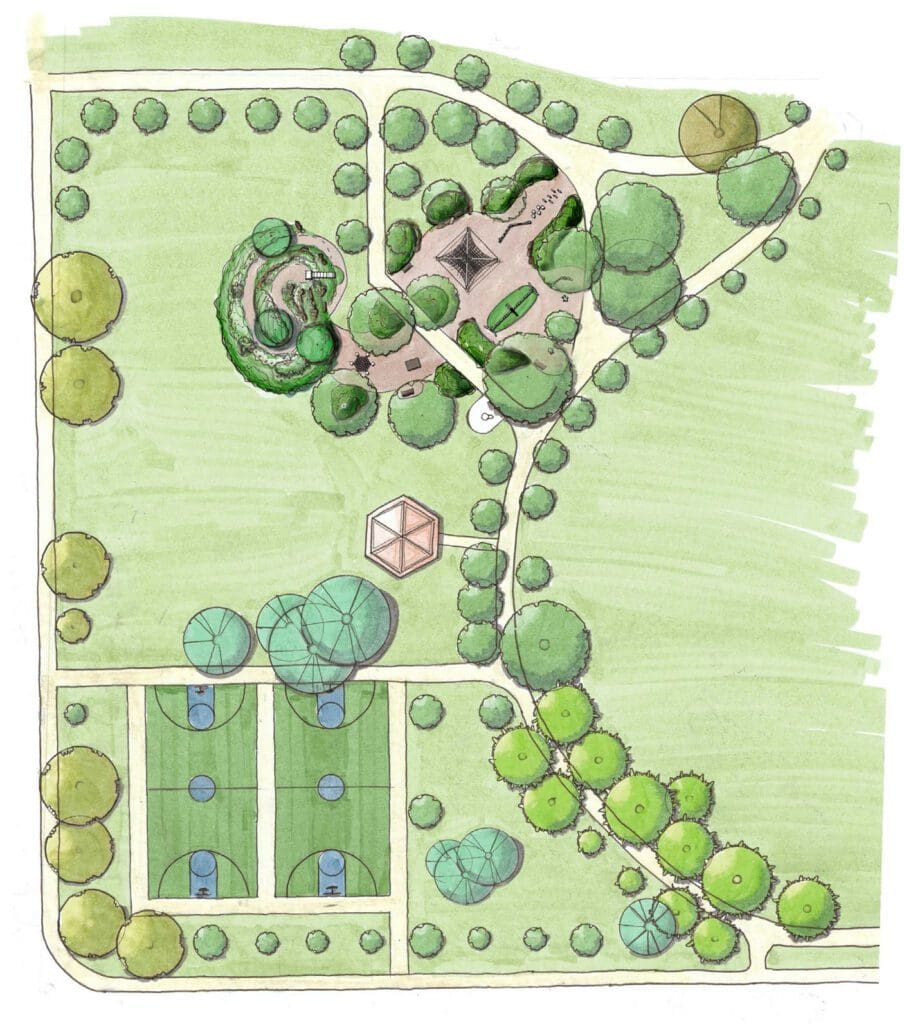
In the short term, the client base is primarily composed of public entities such as cities and school districts looking to redevelop existing spaces. But the trend — on the verge of exploding into a full-blown shift in the recreation paradigm — is expected to spill over into museums, nature centers, and childcare facilities. The biggest shift may be in the private sector, where developers of planned communities and those re-imagining cityscapes search for better, environmentally friendly ways to enhance families’ lives.
In the Southwest, a 700-acre planned community features a 40-acre park — the property’s low spot — that includes native, interpreted plants and trees and a 20-acre pond for kayaking, fishing, picnicking, and bird watching. Look for more of this type of development over the next 15 to 20 years, particularly across the Sun Belt, home to about 150 million people from North Carolina to California.
What makes the prospect of nature-based playgrounds so exciting is they can reflect the locality where they are installed. The premanufactured playgrounds, even those made with the best products on the market, are still generic. They look and feel the same and, perhaps more importantly, children find them boring. But a nature-based playground can feature not only native plant species but also utilize stone quarried from regional sources. A playground in South Carolina won’t look like one in Arizona.
There’s nothing revolutionary about what’s emerging in playground design. Kids have made good use of rocks and trees for quite some time. Give them something to climb on or something to swing from and they’ll figure out the rest. This return to nature, something akin to a market correction, is an acknowledgment that we may have lost along the way.
And that something — the joy of children at play — is a precious thing. In large part, the modern world is defined by technology, and through laptops and handheld devices it has asserted itself into all our lives, including those of children. Empty prefab playgrounds are perhaps symbolic of what’s happened over the last 20 years. But there’s a need to hold onto some of the old things that just never go out of fashion, like kids entertaining themselves in a healthy, natural environment.
Our landscape architecture experts provide the latest insight into the issues related to nature-based playgrounds:
Contact our team today and let’s get your community started on its Return to Nature!

Jason has almost two decades of experience in a range of project types, including planning and design for transportation, commercial, and large-scale residential and municipal projects. His experience includes multiple aspects of the design process, including concept generation, site inventory, site and master planning, landscape and irrigation design, project specifications, green design and infrastructure, and construction observation.

Our team led the second of two public meetings to present the new design developments for the park.
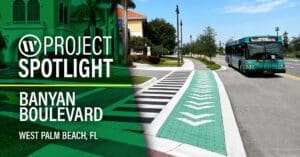
WGI transformed Banyan Boulevard in West Palm Beach, FL, into a safe, comfortable, complete street.

WGI stayed in growth mode throughout the pandemic as it moved to expand its geographic footprint by furthering early steps at organic expansion.

The project, dubbed Kravis 2020: The Future is Now, will increase the size of the lobby, create a pedestrian-friendly plaza opening onto Okeechobee Boulevard, build a new valet parking garage, add an access ramp to the existing garage and improve traffic flow.
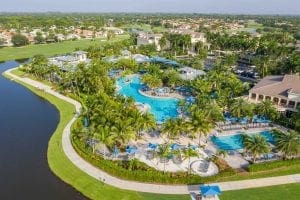
Over the years WGI has played a lead role in helping Woodfield Country Club re-envision the amenities they offer for their members.

Join WGI’s Business Development Manager, Traci Scheppske at the Construction Association of South Florida’s 2019 What’s Developing in Palm Beach County panel along with an esteemed panel of developers, architects, and Palm
You’ve been searching for a place like WGI. We look forward to meeting you soon.
Sign up to receive emails to hear our latest news and achievements in our monthly newsletter.
Enter your zip code, and we’ll personalize your experience with local projects, office locations, team members, and more.
WGI supports its associates with meaningful opportunities for growth, strong benefits and perks, while we work collaboratively with clients and co-consultants to shape and improve communities.






WGI is a dynamic organization with opportunities nationwide for engineers, land surveyors, landscape architects, environmental scientists, and architects.